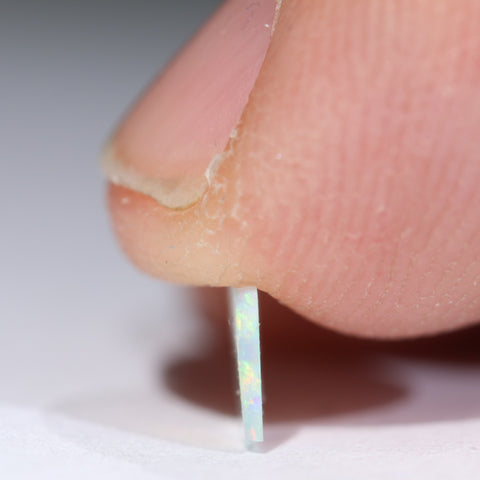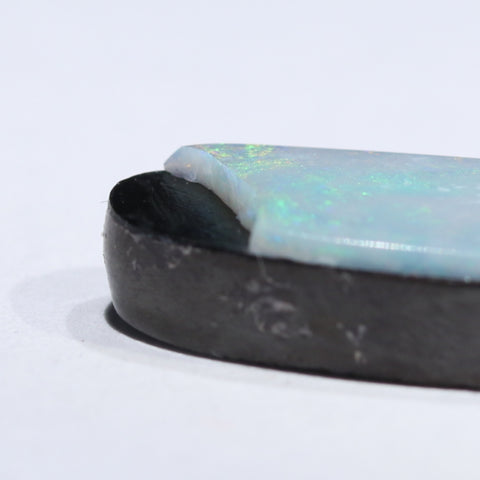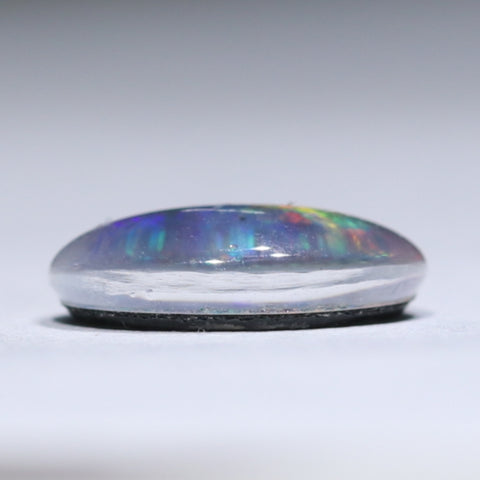My shopping cart
Your cart is currently empty.
Continue ShoppingWhen choosing an Opal, especially for the first time, its very important to understand that not all Opals on offer are the same. Some have taken millions of years to form and can last many generations. While other types of Opals are manmade and can lose their be colours within a very short time.
Below is a brief guide on some of the more common types of Opals
Natural Solid Opal
Opals that has not been changed from its natural state -- except to be cut and polished into a gem stone. The best know types are Queensland Boulder Opal, Black Opal, Crystal Opal, White Opal. Opal can also be found in Mexico and Ethiopia. Natural Solid Opals are the most sort after types of Opals.
Australian Boulder Opal
Boulder Opal is uniquely found in small pockets of ground in western Queensland, Australia. Boulder Opal is a combination of either an Ironstone or sandstone Boulder and a seam of Opal which formed in the crevices inside the Boulder.


Boulder Opal is normally cut and polished with the Opal still attached to the boulder rock on which the Opal formed. Above is a side view of a Boulder Opal polished, notice the uneven way the opal and Iron stone has formed.








Boulder Opal Matrix – Are boulders where the brown Iron stone or sandstone has mixed with the Opal, and where no opal seam has formed.


Example of Boulder Opal Matrix from western Queensland
Australian Black Opal
Has a black or very dark grey body tone or background to its appearance.
The darker the body tone means the Opal colours and pattern will stand out enriching the beauty of the stone.
Any Opal with a graded body tone from N1-N4 is a Black Opal.
 N1 N2 N3 N4
N1 N2 N3 N4




Australian Dark Opal
These beautiful Opals can be found in any of the Australia Opal Fields
They have a grey body tone, and would be grade between N5 – N7
 N5 N6 N7
N5 N6 N7


Australian Dark Opal Pendant and Ring
Crystal Opal
When Opal is fully transparent or translucent, it might have a similar appearance as if looking through glass. Crystal Opal can either have a Black, Dark or White Body tone.


Crystal Opal Ring and Earring
Australian White Opal
Has a white body tone appearance. The Opal colours and patterns presenting themselves in a white opal base.
Any opal with a body tone of N8 or N9 is a white Opal.
 N8 N9
N8 N9



Koroit Opal Matrix
Koroit Opals are found exclusively in the opal fields of Koroit, Australia. Unique, artistic design and beautiful patterns of vibrant colour are characteristic of Koroit boulder opals. They make stunning pendants and rings, and they stand out in a any gem collection.

Koroit Opal Matrix set in Gold and Diamond Pendant
Australian Sandstone Opal Matrix
In certain areas of Queensland, Opal formed inside Sandstone. To enhance the Opal colours, the Sandstone containing Opal, is cooked in cooking oil, resulting in the sandstone turning grey or black in colour. Cooking the Sandstone Opal Matrix in this way will make the Opal colours more vibrant and make any patterns formed by the Opal layers more visible. This type of Opal is sometimes called Fairy Opal.

Natural Sandstone Opal Matrix Beads

Doublet Opals
Is composite of two layers, a top layer of thin Crystal Opal glued to a bottom layer of dark stone

The join between the Opal slice and the base rock is very flat and smooth. This is to make it easier to glue the two pieces together. A solid natural Boulder Opal the join between Opal and host rock will be uneven

Opal Doublet that has been chipped, once damaged an Opal Doublet will be hard to repair, as any heat from reshaping can damage the glue bonding the Opal and base together.
Triplet Opals
A paper-thin slice of Opal, glued on a black stone backing, and a clear crystal dome on top. Triplet Opals can display bright colours, but can be ruined easily by getting wet regularly, eventually the glue bonding the Triplet Opal together will become cloudy and any Opal colours will disappear

The thickness of the Opal in an Opal triplet can be as little as 0.18mm



Differences between similar looking Solid Opal, Doublet Opal, Triplet Opal
Hydrophane Opal (sometimes called Water Opal)
Are Opals that have a large percentage of water content in their crystal structure normally around 17%. One of the characteristics of Hydrophane Opals are that when submerged in liquid, its appearance can change.
If Hydrophane Opal is soaked in water, the water is absorbed into the Opal. As a result, any play of colour(fire) will seem to have disappeared. Colour will normally return once the Opals dries out. Direct contact to the skin should be avoid when wearing Hydrophane Opal, as the body’s natural moisture will be absorbed into the Opal, and colour lost.


Top photo is a Natural Ethiopian Hydrophane Opal, and the bottom photo is the same Opal after been submerged in tap water for 30 minutes.
Notice the Hydrophane Opal has become transparent after contact with water, and the Opal colours appears less.


Most Black Hydrophane Opal has been treated.
